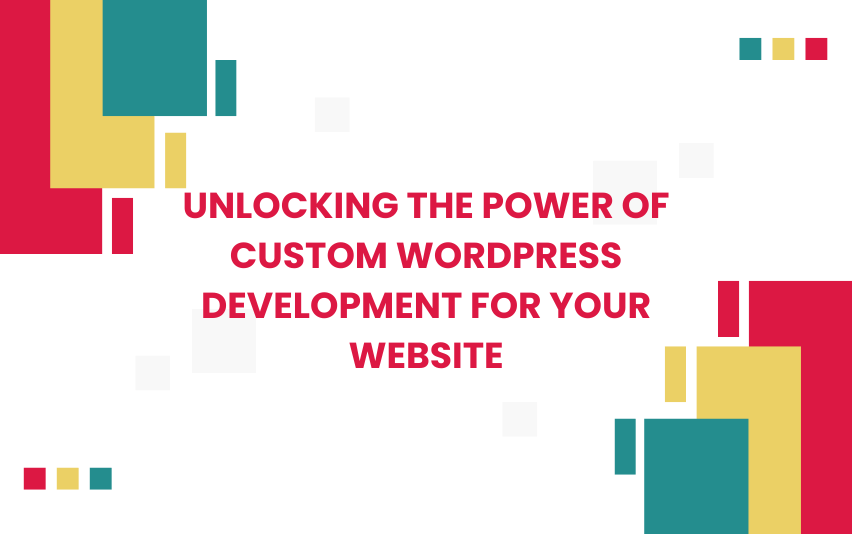Table of Contents
Introduction
Any size business needs a robust and dynamic website to succeed in the modern digital economy. Because of its many themes, vast plugin selection, and easy-to-use interface, WordPress is a widely used website platform. Were you aware that your website may be enhanced by custom WordPress development? We will go over the advantages of custom development, and its procedures, and provide you some pointers to ensure the project is effectively finished.
What Is Custom WordPress Development?
Custom WordPress development refers to the creation of tailor-made themes, plugins, and functionalities for a website using the WordPress platform. While standard themes and plugins offer a range of features and customization options, custom development allows you to design a website that is uniquely aligned with your brand and specific business needs.
Advantages of Custom WordPress Development
- Unique Website Identity: With custom development, your website can reflect your brand’s personality and stand out from competitors.
- Enhanced User Experience: Tailoring the design and functionality of your site to your target audience’s needs can lead to a more satisfying and engaging experience.
- Optimal Performance: Custom WordPress websites are designed with efficiency in mind, resulting in faster loading times and smoother navigation.
- Improved SEO: Custom development allows for the implementation of best practices in search engine optimization, giving your site a competitive edge.
- Scalability and Flexibility: A custom website can grow and evolve with your business, making it easier to add new features and update existing ones.
- Security: Custom development can help ensure your website’s security by using the latest coding standards and security practices.
- Integration with Third-Party Tools: Custom development allows seamless integration with other tools and services your business uses.
The Custom WordPress Development Process
- Discovery and Planning: This initial phase involves understanding your business goals and target audience, as well as planning the website’s structure and features.
- Design and Wireframing: The design phase involves creating wireframes and mockups to visualize the site’s layout and user flow.
- Development and Coding: In this stage, developers bring the design to life by coding the custom theme, plugins, and functionalities.
- Testing and Quality Assurance: The website undergoes rigorous testing to ensure everything works as expected and is optimized for various devices and browsers.
- Launch and Maintenance: Once the site is ready, it is launched, and ongoing maintenance ensures it continues to perform well.
In 2024, custom WordPress development will encompass a variety of services that are geared toward crafting customized WordPress solutions. It includes the creation of customized themes, plugins and integrations that extend WordPress’ standard functionality. The latest WordPress tools and APIs are used by developers to build highly customizable and scalable sites.
The following are the key components of custom WordPress development for 2024:
- Custom Theme Development – Crafting and Coding unique WordPress themes for distinct layouts, branding and user experiences tailored according to client requirements.
- Plugin Development: Creating custom plugins for specific functionality such as e-commerce integration, membership management systems, or advanced features in content management.
- API Integration: Integrating WordPress with APIs from third parties, such as marketing automation tools or enterprise systems. This will streamline business processes.
- Performance Optimization: Implementing strategies for caching, code optimization and other techniques in order to achieve fast loading times, as well as optimal performance, on custom WordPress sites.
- Security Hardening: Using robust security measures including regular updates, secure code practices, and protection from common WordPress vulnerabilities.
- Responsive Design: Use responsive design to make sure your custom WordPress website is optimised for tablets and smartphones. This will guarantee that consumers’ experiences on PCs and tablets are smooth.
- Migration of existing content: Reorganizing and transferring it to custom WordPress installations.
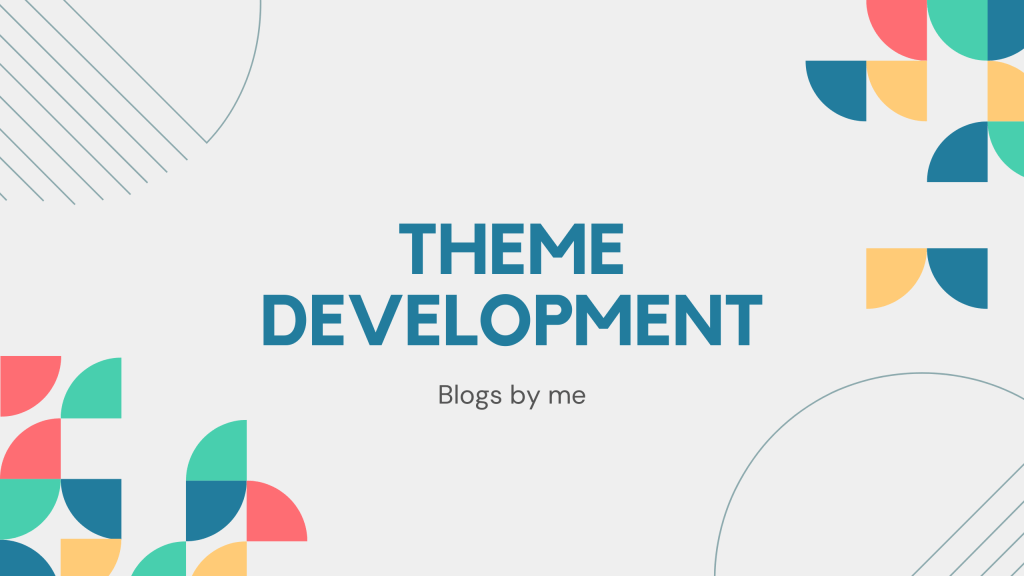
Custom Theme Development
WordPress is the most popular content management system. It powers more than 40% of websites. Its theming system is one of its most important features. This allows users to change the look and feel without changing the code. WordPress is popular due to its versatility. We will examine the core ideas and methodology of WordPress theme development.
A WordPress theme: what is it?
A WordPress theme is a group of files that combine to give a WordPress website its look and feel. These folders could contain JavaScript files in addition to template files, stylesheets, and pictures. The way material appears on your website is determined by its theme, which also affects typography, colour palettes, and page layout.
Importance of WordPress Themes
- WordPress theme customisation is important because it lets website owners personalise their site’s look to reflect their brand and style choices.
- User Experience: By offering a visually appealing and simple to use interface, a well-designed theme enhances user experience.
- Functionality: Specific features and functions that are essential for various website kinds, like e-commerce, blogs, or portfolios, can be added by themes.
- SEO: Well-coded themes may improve your website’s search engine optimisation and help it rank better in search engine results.
Basic Components of a WordPress Theme
- The essential elements of a WordPress theme style.css: The primary stylesheet containing the design and layout guidelines for the theme.
- The primary template file, index.php, acts as a backup for all other templates.
- The code for the site’s header section, which includes the navigation menu, is included in header.php.
- The code for the footer section is included in footer.php.
- The sidebar section is defined by sidebar.php.
- functions.php: Enhances the theme with unique features, functions, and hooks.
- Template Parts: Extra files that specify the structure of particular pages and post kinds, such as single.php, page.php, and archive.php.
The Theme Development Process
- Developing a Theme: Planning and Design Process Start by creating a theme with a well-defined concept and design. Think about your intended audience, the kind of material you’ll present, and the final look you want to go for.
- Configuring the Development Environment: Make use of a locally installed development environment, such Flywheel’s Local or XAMPP. This enables you to refine and test your theme prior to going live.
- Creating Essential Files: The first thing to do is create the necessary files, which include functions.php, header.php, footer.php, index.php, and style.css. Incorporate the essential PHP and HTML code to organise your website.
- Adding Styles and Scripts: To improve your theme’s appearance and functionality, use CSS and JavaScript. To prevent conflicts, make sure that scripts are correctly enqueued in functions.php.
- The WordPress template hierarchy dictates which template file is used to show information, thus it’s important to understand it. This facilitates the creation of unique layouts for various content kinds.
- Testing: To guarantee compatibility and responsiveness, thoroughly test your theme on a variety of hardware and browser combinations. Utilise resources such as the Theme Check plugin to verify your theme’s compliance with WordPress guidelines.
- Documentation: Give your theme comprehensive instructions on how to install, set up, and personalise it. For simplicity of use and user support, this is essential.
- Distribution: After your theme is finished, you may make it available on your own website, through third-party marketplaces, or through the WordPress Theme Directory.
Optimal Techniques for Developing Themes
- Observe the WordPress Coding Standards: Follow WordPress’ coding guidelines to make sure your theme is organised, readable, and maintained.
- Employ Hooks and Filters: Expand functionality without changing core files by utilising WordPress hooks and filters.
- Make sure your theme is responsive: it can adjust to different screen sizes and works on mobile devices.
- Accessibility: Consider accessibility while creating your theme to ensure that those with impairments can use it.
- SEO Optimisation: Use appropriate HTML markup and use key SEO elements to make your theme search engine friendly.
In short, creating a WordPress theme requires both technical know-how and artistic ability. It entails being aware of WordPress’s fundamental ideas, following recommended procedures, and doing ongoing testing to guarantee a flawless user experience. You may design attractive and useful WordPress themes by adhering to the above-mentioned systematic method, regardless of whether you’re building a theme for distribution, client projects, or personal usage.
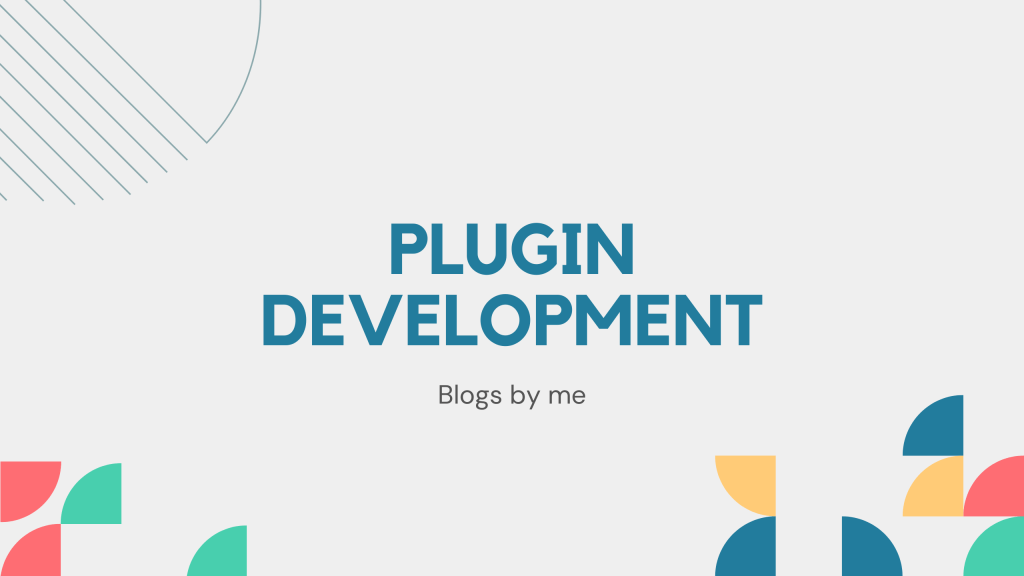
Plugin Development
What is a plugin for WordPress?
Software applications known as WordPress plugins enhance the functionality of WordPress websites. The plugins alter the behaviour of WordPress websites in a variety of ways, from minor adjustments to significant ones. In addition to many other things, they may be used to enhance security, optimise site speed, integrate new features, and much more.
The significance of WordPress plugins
An essential component of the WordPress ecosystem is WordPress plugins. They have several advantages.
- Enhanced Functionality: Users may add new features to WordPress without changing the core code by using plug-ins. Anything from complex forms and unique post kinds to SEO tools and social network integration might be included.
- Customisation: With the use of these technologies, users may make their websites bespoke to their own requirements and offer interesting and distinctive user experiences.
- Usability: Many plugins are intended to be simple to use, so even non-techies may integrate sophisticated features with a few clicks.
- Assistance and Society: There is a large developer community that creates, updates, and supports plugins. This facilitates the process of solving practically any problem.
Plug-in Types
There are two main categories into which plugin functionality may be divided:
- Utility plugins include backup programs (like UpdraftPlus) and speed-enhancing programmes (like WP Super Cache).
- SEO plugins: Programmes like Yoast SEO or All in One SEO help raise a website’s search engine ranking.
- Plugins for E-Commerce: A WordPress website may become a fully working online store with the help of plugins like WooCommerce.
- Design plugins: Users may design custom layouts without knowing any code by using page builder tools like Elementor or WPBakery.
- Plug-ins for Social Media: Social media integration is made easier by these plugins, such as Social Snap and Smash Balloon.
The Operation of Plugins
The WordPress code has hooks that let plugins add functionality. There are two types of hooks:
- Actions: With the help of these hooks, you may modify or add features to WordPress.
- Filters: With these hooks, you may make changes to data before it’s processed or shown.
Plugins may be built using PHP or other programming languages like HTML, CSS, and JavaScript. The plugins may be found in the WordPress installation’s /wp-content/plugins/ directory.
How to Create a Plugin for WordPress
Though the emphasis is on understanding rather than producing plugins, it’s still vital to grasp the fundamentals of plugin construction.
- Planning: Specify the function and goal of the plugin.
- Installing the primary plugin and creating the wp content/plugins/ folder are the setup steps.
- Writing code: To implement the required code, use WordPress’ hooks and functions.
- Testing: To make sure the plugin is stable and compatible, extensively test it in a variety of settings.
- Documentation: Provide consumers comprehensive instructions on how to operate the plug-in.
- Distribution: Using the official WordPress Plugin repository or other ways, distribute the plugin to the WordPress community.
Best Practices
When creating plugins, it’s critical to follow best practices.
- WordPress Coding Standards: Make sure the code is readable and consistent.
- Safety: Put security measures in place to keep risks at bay.
- Performance Optimizer: Make sure the plugin doesn’t cause your website to load more slowly by writing code with efficiency.
- Frequent updates: To guarantee compatibility with the most recent version of WordPress and to fix any bugs or issues, update the plugin frequently.
- Help users fix problems and get the most out of the plugin through user assistance.
Frequently Used WordPress Plugins
Among the most popular and extensively used WordPress plugins are the following:
- Search Engine Optimisation using Yoast
- WooCommerce: Capabilities for online shopping.
- Jetpack: Performance, security, and administration features for websites.
- Contact Form 7: Establish and oversee contact correspondence.
- Akismet: defence against spam.
In short, wordPress plugins are essential to the flexibility and adaptability of WordPress websites. Without needing to know a great deal about technical jargon, users may add more functionality to their website, fostering a thriving ecosystem of improvements and customisations. With WordPress plugins, users may add basic functionality or build intricate systems.
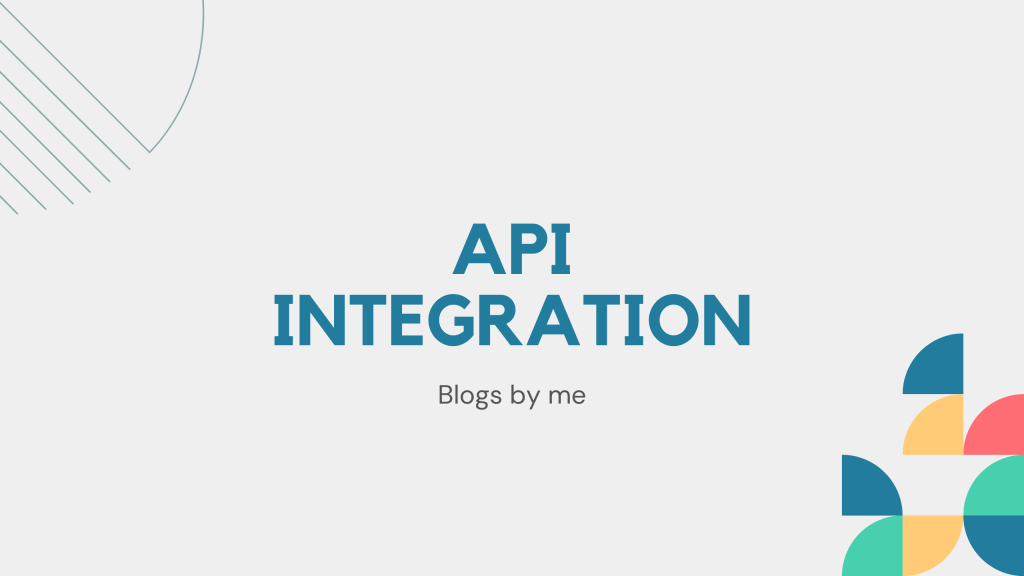
API Integration
The significance of API development is growing as WordPress transforms from a basic blogging platform into a content management system capable of managing several web apps. Applications may communicate and share data thanks to APIs (application programming interfaces). WordPress APIs provide more functionality, improved user experience, and system integration.
Types of APIs in WordPress
- REST API: The WordPress API that is most frequently used is the REST (Representational State Transfer) API. It makes it possible for developers to communicate with WordPress using other apps. With the use of the REST API, WordPress data in JSON format may be accessed through endpoints, simplifying automated content creation, reading, updating, and deletion.
- XML-RPC: This outdated API allows for XML-encoded remote procedure calls. It enables HTTP communication with WordPress websites. It is still maintained for heritage reasons and a few specialised use situations, although being less common nowadays.
- GraphQL: Although WordPress does not support GraphQL natively, developers may still use it by implementing plugins such as WPGraphQL. Compared to REST API, it offers a more effective and versatile means of querying WordPress data.
The benefits of integrating
- WordPress with other platforms and services, such social networking, CRM programmes, and e-commerce platforms, are enhanced by the use of APIs.
- Flexibility: By separating the front-end and back-end, APIs enable developers to utilise a variety of front-end technologies with WordPress serving as the content management system.
- Scalability: Developers may design scalable apps that effectively manage a high volume of requests by using APIs.
- Customisation: WordPress’s functionality may be expanded and customised beyond its basic capabilities thanks to APIs.
Typical Applications of WordPress APIs
- Development of Mobile Apps: Through the REST API, programmers may create mobile applications that communicate with WordPress to get and present information.
- WordPress Headless: This is a solution that sends REST API or GraphQL requests to the backend using a contemporary JavaScript framework such as React, Vue.js, or GraphQL.
- Analytics, payment gateways, email marketing systems, and other third-party services may all be integrated using APIs.
- Custom Dashboards: By using API endpoints, developers may design admin panels and dashboards that are particular to their needs.
Important Things to Keep in Mind for WordPress
- Security API Development: It is essential to provide safe API interactions. To guard against assaults and unauthorised access, this involves putting authentication systems like OAuth and nonce validation into place.
- Performance may be improved by designing APIs with efficiency in mind. This entails managing rate limitations, employing caching techniques, and optimising queries.
- Documentation: In order for API users to properly engage with the API, they must have access to thorough documentation. For its REST API, WordPress offers a wealth of documentation, which is an invaluable tool.
In short, WordPress API development offers countless opportunities to expand and improve the platform’s functionality. APIs are a valuable tool in the toolbox of a WordPress developer, whether they are being used for system integration, designing custom interfaces, or constructing mobile apps. APIs will surely play an increasingly more crucial part in WordPress’ ecosystem as it develops and grows.

Performance Optimization
WordPress speed optimisation is essential for raising website performance overall, search engine rankings, and user experience. A website that loads quickly can improve user happiness, decrease bounce rates, and boost page views. Here, we’ll look at the value of speed optimisation, important variables that effect site speed, and WordPress site maintenance best practices.
The Value of Optimising Speed
User Experience: Websites should load quickly for visitors. Even a brief delay might cause annoyance and increase bounce rates. Studies show that when a website takes longer than three seconds to load, about forty percent of users leave.
- SEO: Page speed is a ranking element taken into account by Google and other search engines. Websites that load faster have a greater chance of ranking higher in search results, which increases organic traffic.
- Conversion Rates: Quicker websites may have a greater percentage of conversions. Potential consumers may become discouraged from completing purchases or completing forms on a sluggish website.
- Factors Affecting WordPress Site Speed: A major factor is the calibre of your hosting provider. While shared hosting may save money, it might cause your website to load more slowly. For improved performance, think about dedicated hosting or VPS (Virtual Private Server).
Factors Affecting WordPress Site Speed
-
Hosting: An important factor is the calibre of your hosting provider. While shared hosting may save money, it might cause your website to load more slowly. For improved performance, think about dedicated hosting or VPS (Virtual Private Server).
-
Plugins and Themes: Not every theme or plugin is made equally. A few may have bad coding, which makes your website load slower. Select plugins and themes that are well-coded and lightweight.
- photos: Your website may run noticeably slower if it contains large, poorly optimised photos. It’s crucial to use properly sized and compressed photos.
- External Scripts: Various external scripts, such as font loaders and ads, might prolong the loading time. Reduce their use or load them in an asynchronous manner.
Top Techniques for Acceleration
- Employing a Caching Plugin Static copies of your pages are stored by caching plugins like WP Rocket, W3 Total Cache, or WP Super Cache, which lower server load and load times.
- Optimise photos: To compress photos without sacrificing quality, use programmes and plugins like Smush or ShortPixel. To postpone the loading of off-screen graphics, use lazy loading.
- Minify CSS, JavaScript, and HTML: Minification eliminates extraneous characters from code, such as spaces and comments, in order to minimise file size. This procedure may be automated with plugins like Autoptimize.
- Turn on GZIP compression to minimise the size of files that are sent from your server to the browser. It can be activated via a plugin or through the hosting control panel.
- Use a network for content delivery (CDN). Distributing the content of your website over several servers throughout the globe is how content delivery networks (CDNs) like Cloudflare or MaxCDN accelerate delivery. Sending material to the user from the closest server helps them do this.
- WordPress should be updated on a regular basis to guarantee that your theme, plugins, and WordPress are current and provide the best possible security and speed.
- Optimise Your Database: Bloating can occur when unnecessary data accumulates in your WordPress database over time. For database optimisation and cleanup, use plugins such as WP-Optimize.
- Restrict Post Revisions: Overdoing it on post revisions might cause your database to grow. You may use a plugin or add a line of code to your wp-config.php file to limit the amount of revisions stored.
- Turn off hotlinking to stop other websites from creating direct links to your photos, which can save bandwidth usage and enhance speed.
In short, one essential component of WordPress site management is speed optimisation. It is possible to guarantee a quick, responsive, and user-friendly website by comprehending the elements that impact site speed and putting best practices into effect. Maintaining peak performance and giving your guests the greatest experience possible requires routine maintenance and monitoring.
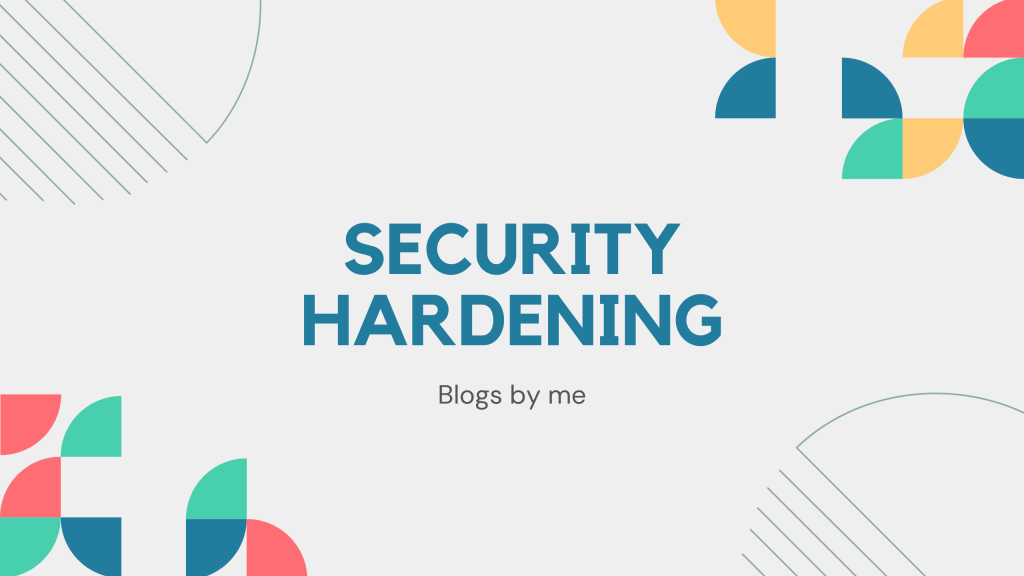
Security Hardening
A crucial component of preserving the functionality and integrity of your website is WordPress security hardening. Owing to its widespread use, WordPress is frequently the subject of cyberattacks. An introduction of the main ideas and techniques for WordPress site security is provided here.
The Significance of Safety Hardening Defence Against Cyberattacks:
- WordPress websites are susceptible to assaults like malware, SQL injection, cross-site scripting (XSS), and brute force. Protection against them is aided by hardening.
- Data integrity and confidentiality: Keeping user information and content safe from tampering or theft is essential to preserving confidence.
- Website Availability: Security breaches may cause downtime that can affect the user experience, and result in revenue loss.
Security Hardening Strategies
1. Regular Updates
- Keep WordPress core updated. Updates include security patches.
- Update Plugins and Themes: In the same way, update all plugins and theme. Security issues can exist in older versions.
2. Strong Authentication
- Strong Passwords: Make sure each account has a strong password. To generate and save your passwords, think about utilising a password generator.
- Put two-factor authentication (2FA) into place to further fortify the security of your credentials.
3. Set a limit on the amount of login attempts
- Login Attempts Limiting: Use plug-ins to limit the login attempts coming from a specific IP address. This can help to stop brute-force attacks.
4. User Role Management
- According to the least privilege concept, users should only be granted the bare minimum of access required to do their tasks. Not every user needs administrator rights.
5. Secure Hosting Environment
- Select a hosting provider that has a strong reputation for security. Security features are often included in managed WordPress hosting services. Configure your server correctly using secure protocols such as HTTPS.
6. Backup regularly
- Regular Backups: Back up your WordPress website regularly. Both the database and files are included. Backups must to be kept in a safe location and inspected on a regular basis to ensure they are functioning.
7. Web Application Firewall
- Implement WAF: Use WAFs to monitor and filter HTTP traffic between an application on the web and the Internet. This protects against a variety of attacks.
8. Security Plugins
- Install Security Plugins: Use reputable security plug-ins such as Wordfence or Sucuri Security.
9. File Permissions
- Correct File Permissions: Set the correct file permissions on WordPress files and directories. wpconfig.php, for example, should be set at 440 or 400.
10. Database Security
- Change Database Prefix: The default database prefix, (wp_), is well known and can be targeted. Change the database prefix to something different.
- Secure Database User: Make sure the database user has only the privileges necessary.
11. Disable file editing
- Disable In-Dashboard File Editing: By adding define(‘DISALLOW_FILE_EDIT’, true); to wp-config.php, you can prevent users from editing plugin and theme files from the dashboard.
12. Regular Security Audits
- Perform regular security audits in order to identify and correct vulnerabilities. Audit logging is often included in security plugins.
In short, multiple layers of security are used to harden WordPress. You may lessen the chance that someone may hack your website by taking these safeguards. You need to manage user roles, employ security tools, enforce strong authentication, update your WordPress site often, and add plugins in order to keep it safe.
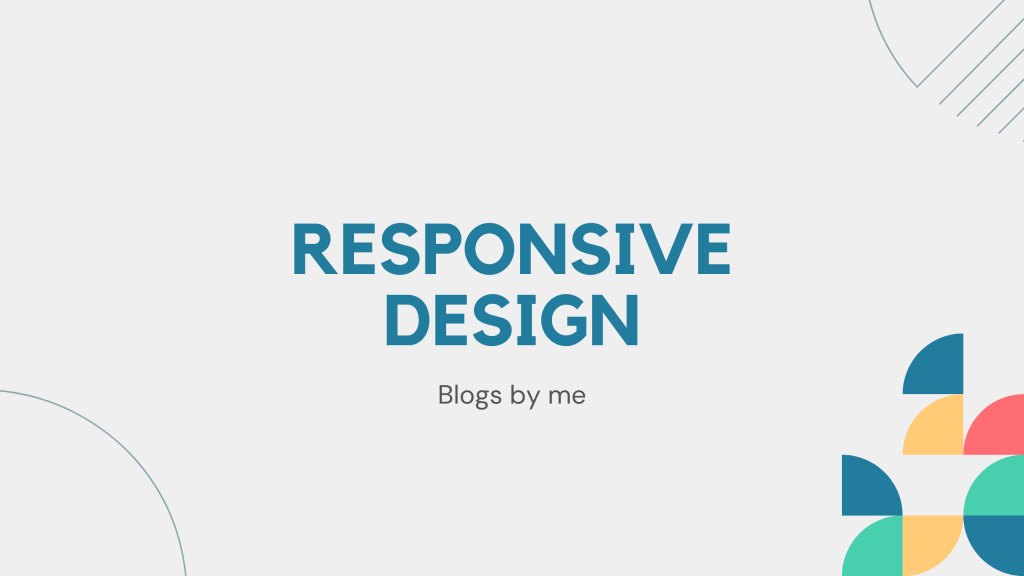
Responsive Design
Responsive design is one of the main concepts of contemporary web development. It guarantees the greatest possible website experience across all platforms, including mobile and PC. One well-liked program for building and maintaining websites is WordPress. Responsive design is therefore very important on this platform. This post goes into great depth on the significance of responsive design in WordPress.
What is responsive design?
One web design technique that ensures pages display properly on a range of window or screen sizes and devices is responsive design. A responsive website offers an easy-to-use interface by dynamically adjusting its layout to the device’s screen size and orientation. This implies that in order to stay visible and understandable, text, graphics, and navigation elements adjust in size and location.
Relevance of Responsive Design
- User Experience: Regardless of the device a user uses, responsive design makes sure they have a good experience. Reducing bounce rates and maintaining visitor engagement need this.
- SEO Benefits: Mobile-friendly websites rank higher in search results from search engines like Google. Your site’s rating can be raised with a responsive design, increasing traffic and exposure.
- Accessibility: By ensuring that material is legible and accessible on all devices, it improves accessibility. With the increasing use of mobile internet, this is especially crucial.
- Cost-effectiveness: Building a single responsive website is less expensive than building different websites for mobile and desktop visitors. It also makes upgrades and maintenance easier.
- Future-Proofing: A responsive design makes sure your website can adjust to new screen sizes and resolutions without requiring major redesigns, especially with the variety of devices on the rise.
WordPress’s Assistance for Responsive Design
WordPress provides support for responsive design with a number of themes and plugins made especially for building websites that work well on mobile devices. The following are some essential WordPress features and resources that support responsive design:
- The majority of WordPress themes are constructed with responsive design in mind. Depending on the device, these themes automatically change the layout. Among the most well-liked responsive themes are Divi, OceanWP, and Astra.
- Media Queries: WordPress themes employ CSS media queries to apply various styles based on the width, height, and orientation of the device.
- WordPress has flexible pictures that may be made to automatically resize to meet a variety of screen sizes. In HTML5, the srcset property is frequently used to deliver suitable image sizes to various devices.
- Plugins: A WordPress website may be made more responsive by using a variety of plugins. Tools for mobile optimisation, responsive image handling, and other responsive design improvements are available through plugins such as WPtouch, Jetpack, and Smush.
- Block Editor (Gutenberg): Responsive controls for blocks are included into the WordPress block editor Gutenberg. This lets users control right from the editor how their material looks across various devices.
The Best Ways to Ensure That Your WordPress Website Is Responsive
- Select a Theme That Adapts: To get started, choose a responsive theme. Try the demo to confirm the theme’s look and functioning on various devices.
- Optimise photos: Make sure your photos are optimised for quick loading times and use responsive images. Smush and other plugins assist reduce image size without sacrificing quality.
- Test Across Devices: To make sure your website stays responsive, test it frequently across a range of screen sizes and devices. Resources like as Google’s Mobile-Friendly Test are helpful.
- Employ Responsive Plugins: Choose responsive plugins and stay away from ones that might interfere with layouts that are optimised for mobile devices.
- Custom CSS: You may adjust the responsiveness of your website using custom CSS if necessary. Media queries are very useful for optimising the look across various devices.
In short, in the current digital environment, responsive design is essential for building efficient and accessible websites. With the help of its themes, plugins, and integrated tools, WordPress offers strong support for flexible design, letting users develop websites that work flawlessly on all platforms. Through comprehension and use of adaptable design concepts, you can guarantee that your WordPress website stays competitive and user-friendly in the constantly changing online landscape.
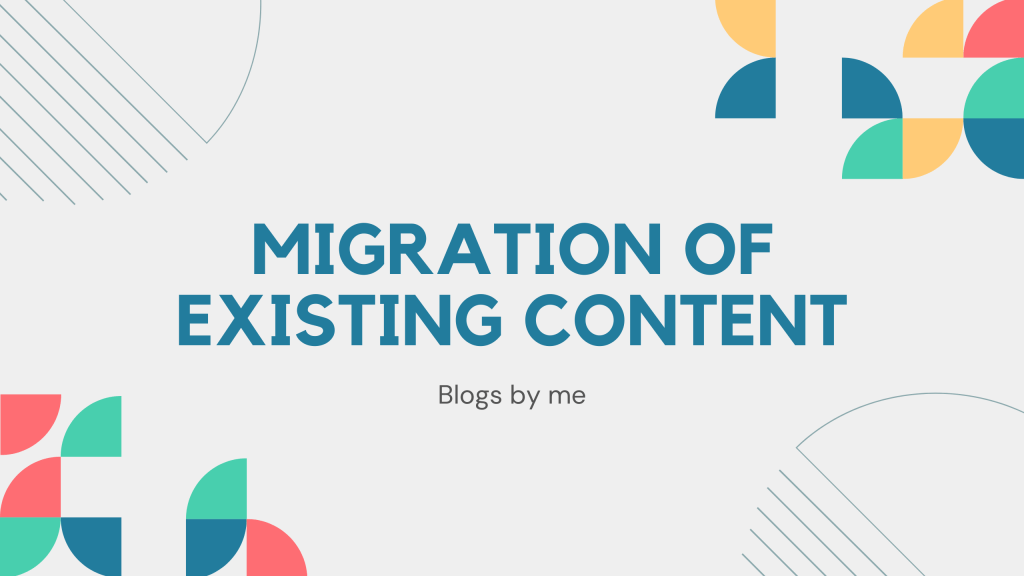
Migration of existing content
Moving the data on your website, such as posts, pages, and media, from one location to another is called the WordPress migration of existing content. A fresh WordPress installation, a domain change, or a transfer to an alternative web host are just a few of the reasons you would want to accomplish this. A thorough guide on WordPress content migration may be found here.
Reasons for migration
- Hosting Upgrades: Changing to a more reliable hosting provider or upgrading customer service.
- Domain Name Changes: Changing to a different domain name to brand yourself or align with your new business direction.
- Development Environment: Transferring a website from a staging or local environment to a production server.
- Content management: Merging several WordPress sites into one or splitting up a website into multiple sections.
What Content Types to Migrate
- Pages and Posts: Includes all written content, including blog posts and static pages. It also includes custom post types and drafts.
- Media Files Images, videos, audio and other media are available in the Media Library.
- Comments: User comments on pages and posts.
- Menus & Navigation: Customisable menus & navigation settings.
- Sidebars and Widgets: The content and settings of sidebars and widgets.
- Themes and Plugins: Configurations and settings for installed themes and plugins.
- User Data: Accounts, roles and permissions for users.
Methods of Migration
1. Manual Migration
- Capabilities for Export and Import: To export material in an XML file and subsequently import it onto the new website, utilise WordPress’s built-in export and import capabilities. This is suitable for pages, posts, and media.
- Export/Import: Export the WordPress data from the old website using phpMyAdmin, or a similar program. Then import the database into the database of the new site. This requires more technical knowledge.
2. Plugin-Based Migration:
- All in One WP Migration: This popular plugin that simplifies export/import by packaging content, themes and plugins into one file.
- Duplicator: Creates a duplicate of the site including the database that can be moved easily to a different location.
- UpdraftPlus: Primarily, a backup plug-in but it also has migration features.
3. Migration of Hosting Provider
- Many web hosts provide migration services and tools to automate the process. This is the easiest method for users who are not technically minded.
Pre-Migration Preparedness
- Backup Your Site: Always backup your WordPress site prior to starting the migration. This includes the database and files.
- Update WordPress Themes and Plugins Ensure your WordPress installation is up to date. This will help you avoid compatibility problems.
- Check Compatibility: Verify the new hosting environment is compatible with requirements of your site (e.g. PHP version, database versions).
After-Migration Actions
- Check Permalinks: Verify that the permalink structure has been correctly configured in the new environment.
- Test Functionality: Ensure that all features are working correctly. Check for broken images, broken links and plugin functionality.
- Update DNS: If you have moved to a different domain or hosting provider update the DNS settings of your domain to point at the new server.
- Redirects Implement 301 redirects as necessary to maintain rankings in search engines and guide users from the old URLs to the new.
- Reindex Site: Inform search engines of the site’s move and ask for a reindexing using tools such as Google Search Console.
Challenges and Solutions
- Downtime: Plan migrations during non-peak hours to reduce downtime.
- Data loss: Mitigate the risk by using reliable migration tools and thorough backups.
- SEO Impact: Manage redirections carefully and inform search engines of any negative impact on SEO.
Following the above guidelines will ensure that your WordPress content is migrated smoothly, minimising downtime, and maintaining the integrity of data and functionality of your site.
Conclusion
Custom WordPress development offers a range of benefits that can help your website stand out and achieve your business goals. By investing in a tailored solution, you can enhance user experience, optimize performance, and create a unique online presence. Consider partnering with an experienced development team to unlock the full potential of custom WordPress development for your website.

5 Unique FAQs
Q1: How long does custom WordPress development take?
- The timeline varies depending on the complexity of the project, but it typically ranges from a few weeks to a few months.
Q2: Is custom WordPress development expensive?
- Custom development can be more expensive than using standard themes and plugins, but the investment can lead to significant long-term benefits.
Q3: How does custom development benefit SEO?
- Custom development allows for the implementation of SEO best practices, such as clean code and optimized content, which can improve search engine rankings.
Q4: Can I integrate third-party services with a custom WordPress website?
- Yes, custom development allows seamless integration with third-party tools and services to enhance your site’s functionality.
Q5: How do I maintain a custom WordPress website?
- Regular maintenance is crucial to keep your custom WordPress website secure and up-to-date. Work with your development team or hire a dedicated maintenance service.

